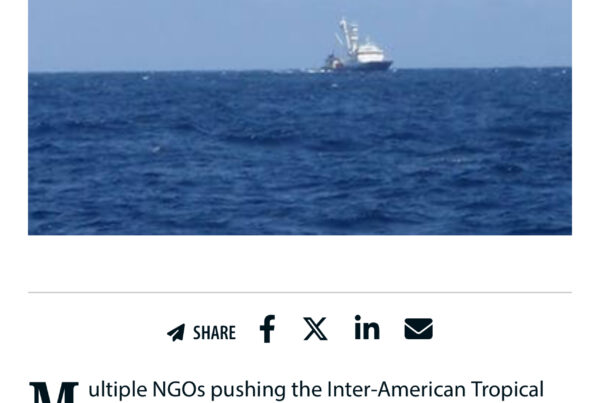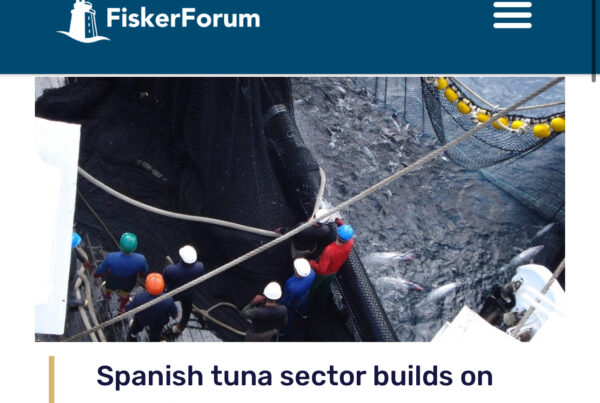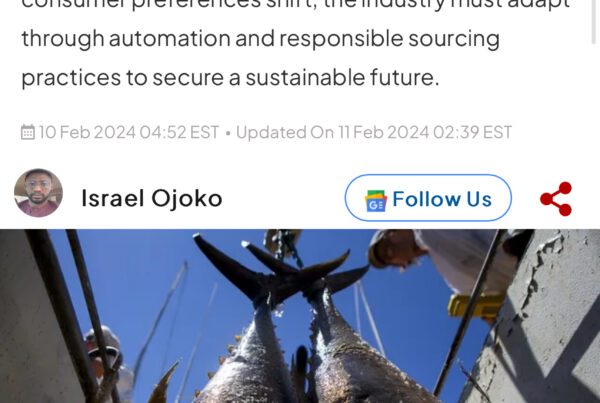IOTC Meeting Offers Chance for Compromise as EU Objects to dFAD Rules
A recently approved Indian Ocean Tuna Commission (IOTC) measure instituting a closure period for drifting fish-aggregating devices (dFADs) is continuing to cause tension, with the European Union recently announcing it is objecting to the decision.
The E.U. is putting forward two new proposals at the next meeting: one to replace the dFAD rule to which it has objected, and another to set new tropical tuna quotas, in place of an earlier measure to which other parties have objected.
Several IOTC members have already opted out of the conservation management measure, and the E.U. – one of the largest users of dFADs in the Indian Ocean – has called the vote an effort to expel Europeans from the region’s fishery. The divisive decision on dFADs comes in the wake of a spat over a previous IOTC measure lowering catch limits for yellowfin tuna, which was adopted by majority vote in January 2022.
Continue reading here (Source: SeafoodSource).
EU Makes Proposals for the Conservation and Sustainable Management of Tuna in the Indian Ocean
Today, the European Union made public four ambitious proposals for the next Indian Ocean Tuna Commission (IOTC) session taking place from 8 to 12 May 2023. The objective is to improve the conservation of tuna and the management of fisheries. According to the IOTC Scientific Committee, the current situation of the stock and level of fishing in the Indian Ocean are not sustainable. Along with the new proposals, the EU has tabled an objection to the IOTC Resolution 23/02 on the management of drifting Fish Aggregating Devices (FADs). Continue reading here (Source: European Commission).
What to Watch For: El Nino Likely to Develop This Summer
NOAA’s Climate Prediction Center has issued an El Nino Watch this morning as part of its April ENSO outlook.
A watch is issued when conditions are favorable for the development of El Nino within the next six months. While we are still in an ENSO-neutral phase – when no El Nino or La Nina is present – there is a 62% chance El Nino will develop sometime between May and July. This comes after nearly two continuous years of a La Nina. Continue reading here (Source: National Oceanic and Atmospheric Administration).
Vietnamese Tuna Exports to the UK Triple in First Two Months of 2023
Tuna exports to the U.K. tripled year-on-year in the first two months of the year even as shipments to some main markets like the U.S. and E.U. plunged.
Exports to the U.K. were worth US$1.3 million, enabled by a 13-fold rise in February, according to the Vietnam Association of Seafood Exporters and Producers (VASEP).
Vietnam now ranks 13th out of 45 countries and territories that export tuna to that country. Continue reading here (Source: VnExpress).
Fishing Regulators Need More Transparency, Ocean Groups Say
Some regional fisheries management organizations that were set up by the United Nations to measure and conserve fish populations — but are difficult to hold to account — need to be more transparent about how they make their rules and regulations if fish species are to be protected and maintained for people reliant on healthy fish stocks for their livelihoods, conservation agencies and fishing industry players say.
The 50-some regional fisheries management organizations worldwide bring together local, coastal states and bigger international players to regulate how companies and countries can fish in waters worldwide in a way that best conserves populations of fish and other ocean species based on scientific evidence.
For years, these regional regulators have been accused of undemocratic practices that favor large, industrial fishers but now several conservation groups are banding together to renew calls for a culture change. Continue reading here (Source: Japan Today).
Japan Tops Importers of Vietnam’s Fishery Products in Q1 2023
Japan tops importers of Vietnam’s aquatic products in Q1.
However, the revenue from this market still dropped 11% year on year, statistics show.
Exports to Japan fell sharply in terms of some key products such as white-legged shrimp down 35%, salmon down 4%, and octopus down 6%. Meanwhile, increases were seen mainly in caught seafood, including squid, scad, pollock, tuna, and jack mackerel, rising about 13 – 88%. Continue reading here (Source: Vietnam Net Global).
ISSF’s Interactive Stock Status and Catch Tool
The tool has three tabs — one for visualizing tuna stock health since 2011, another for visualizing the current tuna catch by fishing method, and a third with catch trends by fishing method since 1950.
Read this press release for more background on the launch of this tool in 2018 and the most recent release for details on the Catch Trends tab. Continue reading here (Source: International Seafood Sustainability Foundation.



